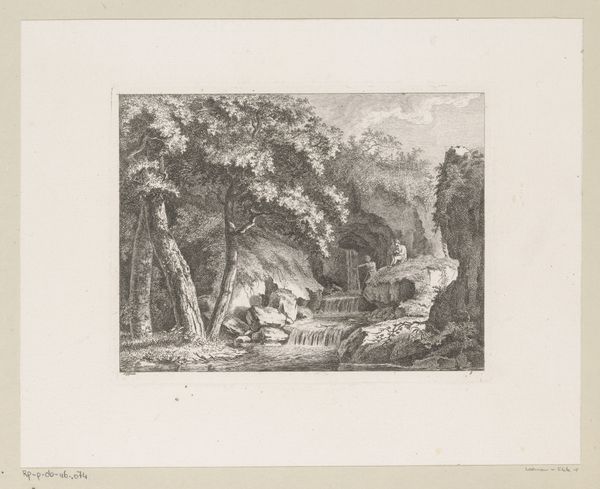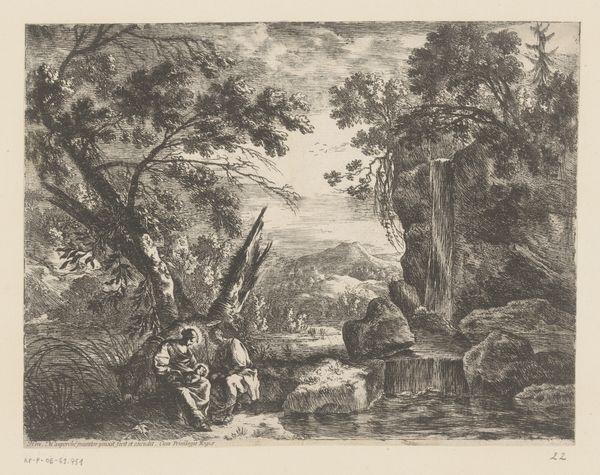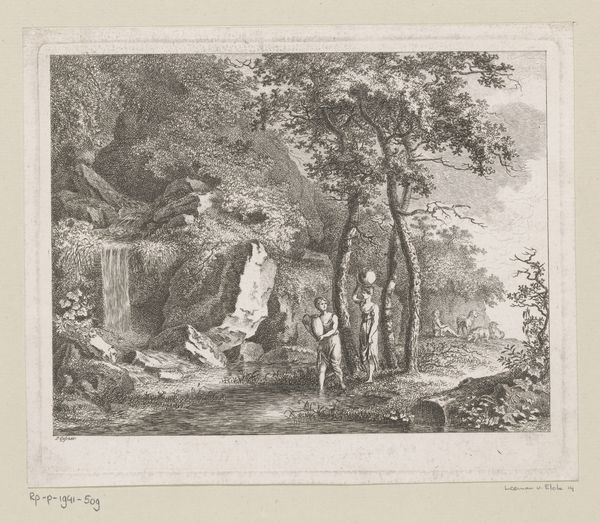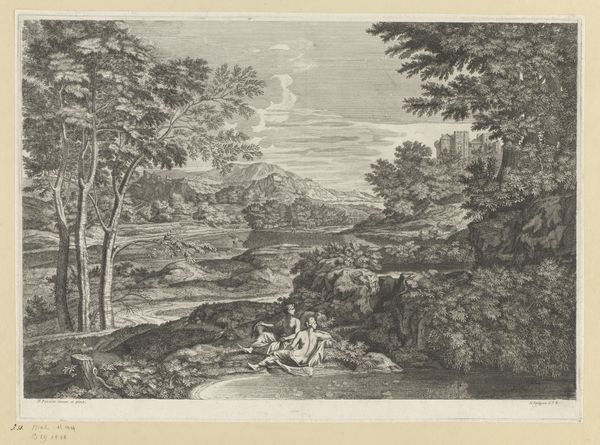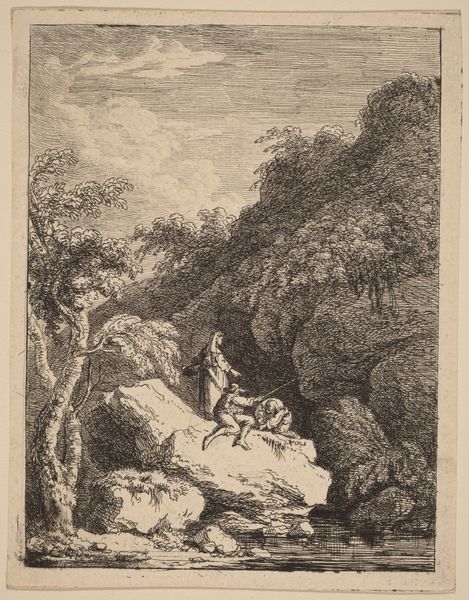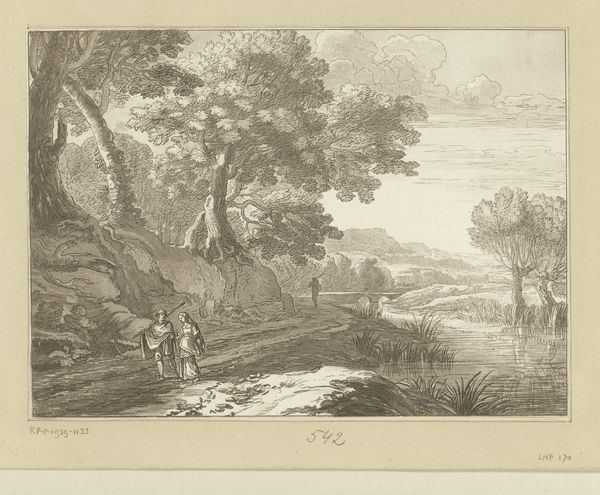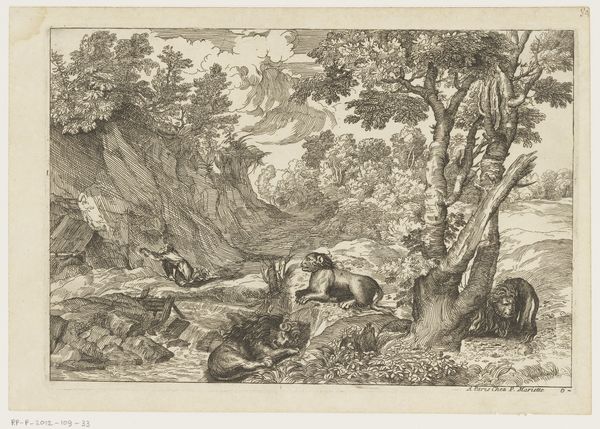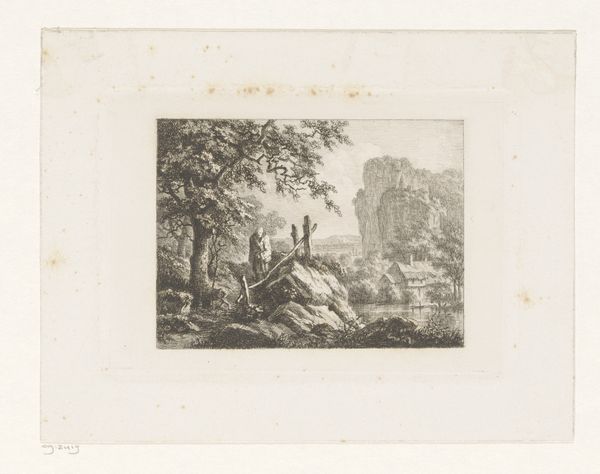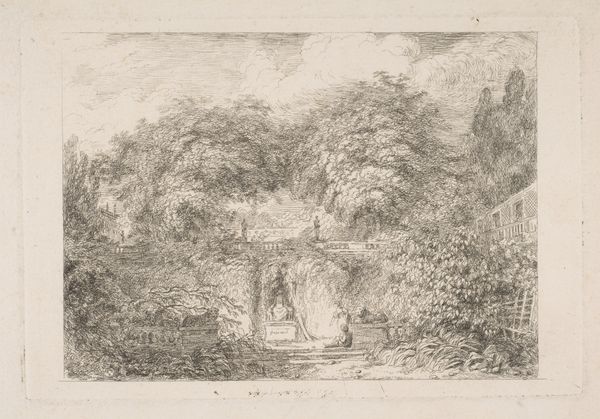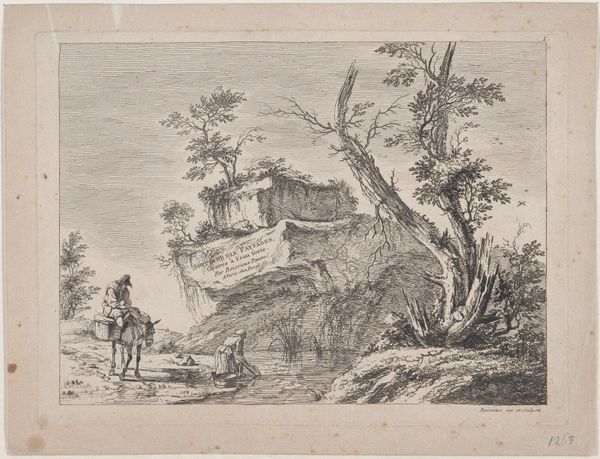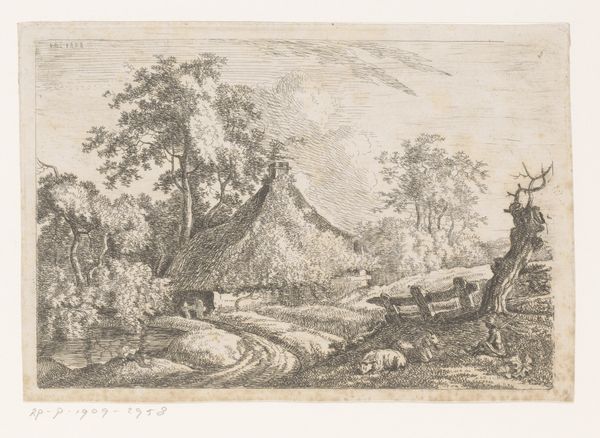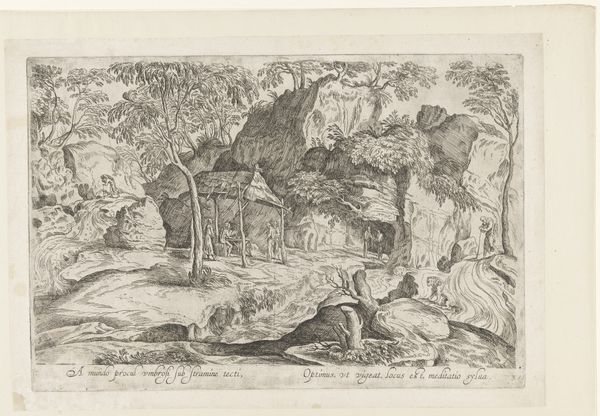
etching
#
ink drawing
#
baroque
#
pen sketch
#
etching
#
landscape
Dimensions: height 189 mm, width 257 mm
Copyright: Rijks Museum: Open Domain
Curator: Editor: Here we have Henri Mauperché's "Landscape with John the Baptist Preaching," an etching created sometime between 1612 and 1686 and held at the Rijksmuseum. I find the landscape details really draw me in. What strikes you about it? Curator: It’s compelling how Mauperché, working within the Baroque landscape tradition, uses this biblical scene to perhaps subtly critique the societal structures of his time. Landscape isn't just background; it's often a reflection of societal and political contexts. The preaching becomes a stage for questioning authority. Who is being converted in the image and how does that affect my interpretation? Editor: Conversion implies some element of social change or maybe religious movements challenging norms? I hadn’t considered that. Curator: Exactly. Consider how the Baroque era was a period of significant religious and political upheaval. Artists like Mauperché, through seemingly benign landscapes, could engage in discourses about power, faith, and the human condition. Where do we, the viewer, stand in relationship to the preacher and his audience? Editor: That is interesting to consider. The crowd of people are listening, maybe as a collective and potentially diverse group. Curator: Exactly. Think about the potential for communal interpretation, perhaps a form of social resistance. It goes beyond mere religious instruction; it could be a space for shared experiences of societal critique. It opens discussions of cultural authority to marginalized peoples. What impact can their voice and actions achieve by creating community and practicing civil disobedience? Editor: Seeing it as a social commentary through the landscape is powerful. I'll definitely view Baroque landscapes differently now. Curator: Me too. Looking at art as a reflection of society helps us engage with it more deeply, finding our own connection with it, regardless of when it was created.
Comments
No comments
Be the first to comment and join the conversation on the ultimate creative platform.
